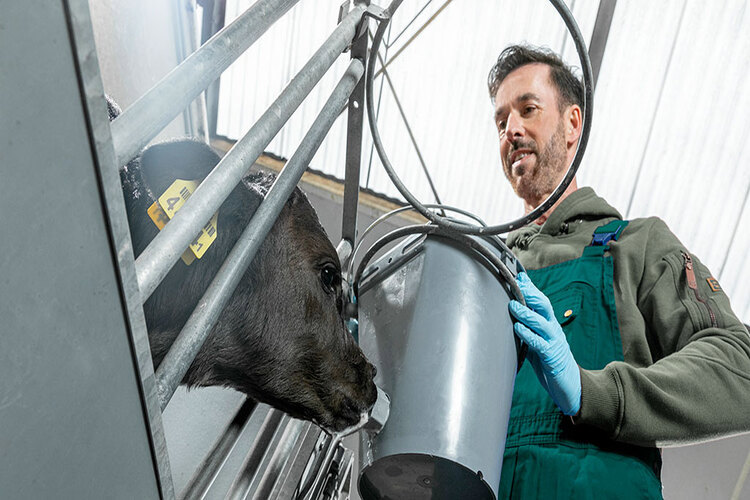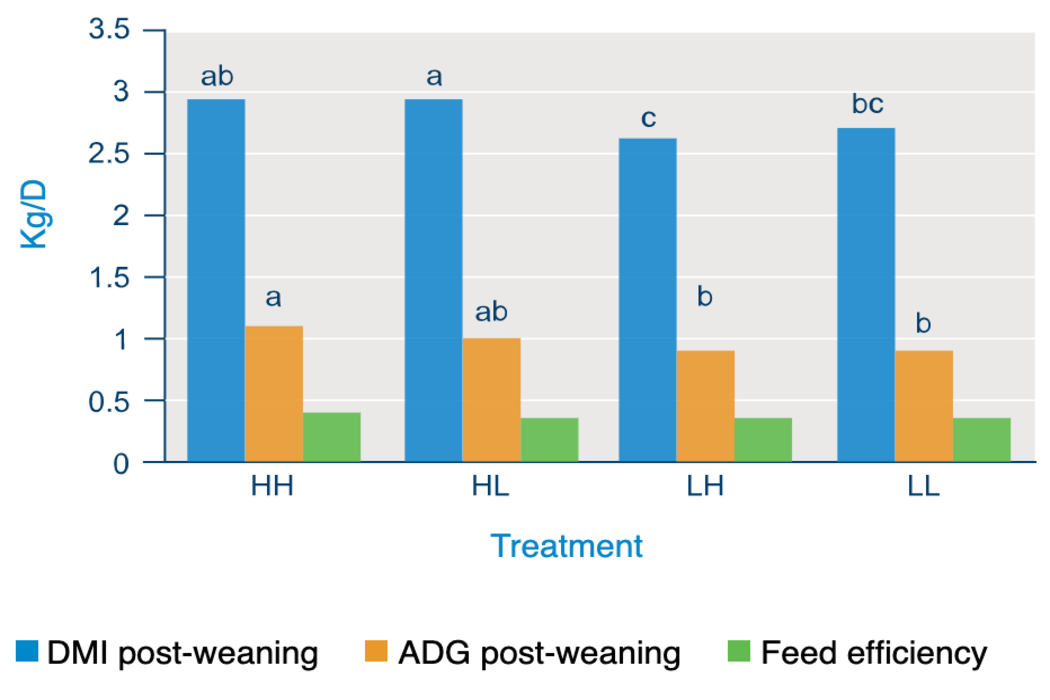- LifeStart
- Colostrum Management
Key takeaways from the research
-
Feeding sufficient amounts of colostrum enhances the positive effects of high levels of pre-weaning nutrition
-
Non-nutritive and non-immune factors in colostrum alter the efficiency of use of nutrients and have a subtle effect on appetite regulation in the calf

Feeding increased amounts of colostrum increase the positive effects of high levels of pre-weaning nutrition
The benefits of colostrum intake are not limited to those related to the immune system. Non-nutritional factors in colostrum have long been recognized as valuable for the development of the newborn calf. Several researchers showed that different levels of colostrum ingestion had short term effects on growth, metabolism and endocrine status of calves[1,2,3]. Other researchers looking at long-term benefits of feeding increased levels of colostrum or pre-weaning nutrition found increases in milk production and survival rate through second lactation[4,5,6,7]. Soberon and van Amburgh[8] studied the effects of different levels of colostrum intake in combination with different levels of calf milk replacer intake on voluntary feed intake, growth and feed efficiency in pre and post-weaned Holstein dairy calves.
Study design
A total of 125 Holstein calves were randomly assigned to 4 treatments:
- HH: 4 litres of colostrum immediately after birth and another 2 litres of colostrum 12 hours later, followed by ad libitum CMR with a maximum of 12 litres/day
- HL: 4 litres of colostrum immediately after birth and another 2 litres of colostrum 12 hours later, followed a daily allowance of CMR resulting in an ADG of about 300 g/day
- LH: 2 litres of colostrum immediately after birth followed by ad libitum CMR with a maximum of 12 litres/day
- LL: 2 litres of colostrum immediately after birth, followed a daily allowance of CMR resulting in an ADG of about 300 g/day
Effects during the pre-weaning phase
The effect of the different feeding schedules during the pre-weaning phase was clear: the average daily gain was significantly higher in the high milk treatments:
- HH: 786g/day
- HL: 423 g/day
- LH: 673 g/day
- LL: 394 g/day
Effects during the post-weaning phase
The treatments HH and HL, both with the high feeding level of colostrum resulted in a slightly higher feed intake and an increase in average daily gain. The feed efficiency was almost identical.

Conclusion
The results of this study show that colostrum status impacted growth rates of calves provided adequate nutrients above maintenance. Post-weaning feed intake was slightly increased in this study in calves fed high colostrum volumes, despite the fact that transfer of maternal antibodies was satisfactory also in the groups fed low amounts of colostrum. IgG levels were well above the industry standard of at least 10g/L for all 4 groups. The results of this study suggest that non-nutritive and non-immune factors in colostrum alter the efficiency of use of nutrients and have a subtle effect on appetite regulation in the calf.
References
[2] Kühne S, Hammon, Bruckmaier, R.M, Morel, C, Zbinden, Y and J. W. Blum. 2000. Growth performance, metabolic and endocrine traits, and absorptive capacity in neonatal calves fed either colostrum or milk replacer at two levels. J. Anim. Sci. 78:609–620.
[3] Rauprich A. B., H. M. Hammon and J. W. Blum. 2000. Influence of feeding different amounts of first colostrum on metabolic, endocrine, and health status and on growth performance in neonatal calves. J. Anim. Sci. 78:896–908.
[4] DeNise, S. K, Robison, J.D, Stott, D.H. and D. V. Armstrong. 1989. Effects of passive immunity on subsequent production in dairy heifers. J. Dairy Sci. 72:552-554.
[5] Faber, S. N, Faber, N.E, McCauley, T.C. and R. L. Ax. 2005. Case Study: Effects of colostrum ingestion on lactational performance. Prof. Anim. Scientist 21:420.
[6] Soberon F, Raffrenato, E, Everett, R.W. and M. E. Van Amburgh. 2011. Early life nutritional management and effects on long term productivity of dairy calves. J. Dairy Sci. 95:783-793.
[7] Bar-Peled, U, Robinzon, B, Maltz, E, Tagari, H, Folman, Y, Bruckental, I, Voet, H, Gacitura, H, and A. R. Lehrer. 1997. Increased weight gain and effects on production parameters of Holstein heifer calves that were allowed to suckle from birth to six weeks of age. J. Dairy Sci. 80:2523-2528.
[8] Soberon, F, and M.E. van Amburgh, 2011, Effect of colostrum intake and pre-weaning nutrient intake on post weaning feed intake efficiency and voluntary feed intake, American Dairy Science Association.



